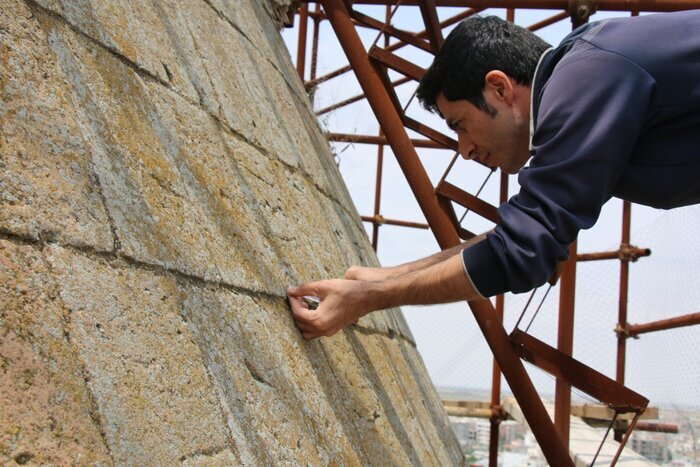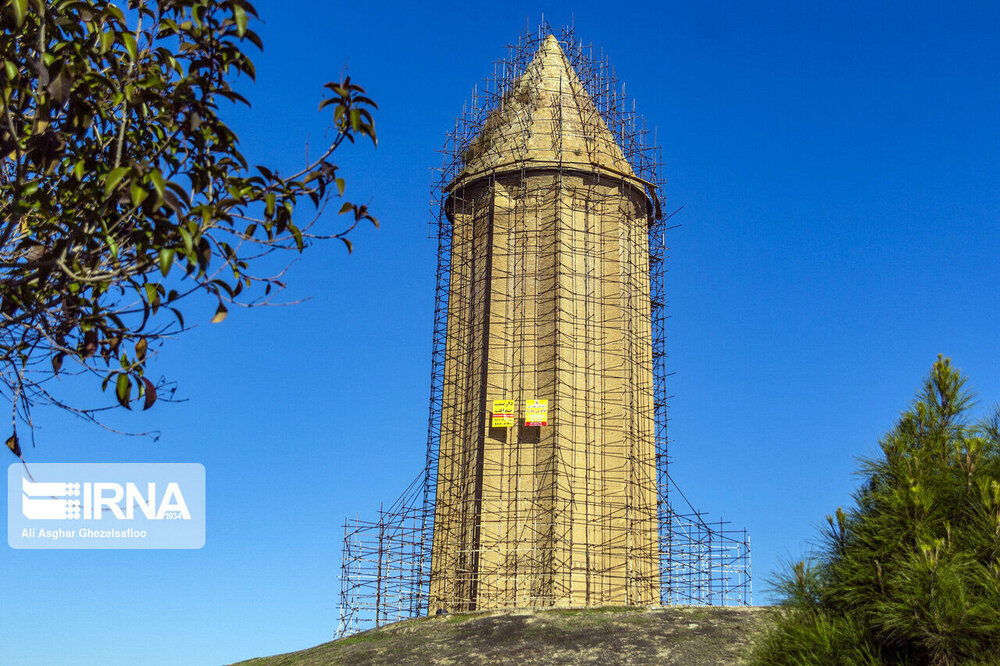UNESCO-registered Gonbad-e Qabus prepared for restoration

TEHRAN – A team of cultural heritage experts has commenced a detailed examination of the UNESCO-registered Gonbad-e Qabus as a prerequisite for the restoration of the millennium-old tower.
Located in Iran’s Golestan province, the brick tower is of high architectural importance as an exemplar and innovative design of the early-Islamic-era architecture.
“Up to the moment, a documentation plan of the monument has been completed, and we have also determined a proper approach for a comprehensive restoration of the tower,” the director of the World Heritage site, Abdolmajid Nourtaqani, announced on Sunday.
“So far, to prepare a comprehensive plan for the restoration of this historical building, some technological steps such as one-by-one examination of the bricks and their arrangement, have been taken.”
Paying a visit to the tower, the official told reporters that the first serious restoration work on the monument took place in the [Iranian calandar] year 1310 (1931), in which several professional groups of experts took valuable measures to preserve and restore this historical monument.
For years the World Heritage has suffered from weeds growing on the surface. According to Nourtaqani, growing plants on the Qabus tower is not a new issue, and is witnessed in all brick buildings across the country, especially in northern provinces, due to their climatic conditions.
“The tower has also been facing such phenomenon for more thousand years, though the issue has been intensified by [heavy] rainfalls earlier this year,” Abdolmajid Nourtaqani said.

Visible from great distances in the surrounding lowlands near the ancient Ziyarid capital, Jorjan, the 53-meter high Gonbad-e Qabus dominates the town laid out around its base in the early 20th century.
The tower’s hollow cylindrical shaft of unglazed fired brick tapers up from an intricate geometric plan in the form of a ten-pointed star to a conical roof. Two encircling Kufic inscriptions commemorate Qabus Ibn Voshmgir, Ziyarid ruler and literati as its founder in 1006 CE.
Narratives say the tower has influenced various subsequent designers of tomb towers and other cylindrical commemorative structures both in the region and beyond. The structure capped by an eye-catching conical roof boasts intricate geometric principles and patterns which embellish parts of its load-bearing brickwork.
July 1 is considered a significant cultural event for Iranians to hold the anniversary of Gonbad-e Qabus UNESCO registration, and the annual celebration is organized by Gonbad Kavus municipality.
According to the UN cultural body says, the monument bears testimony to the cultural exchange between Central Asian nomads and the ancient civilization of Iran.
AFM
